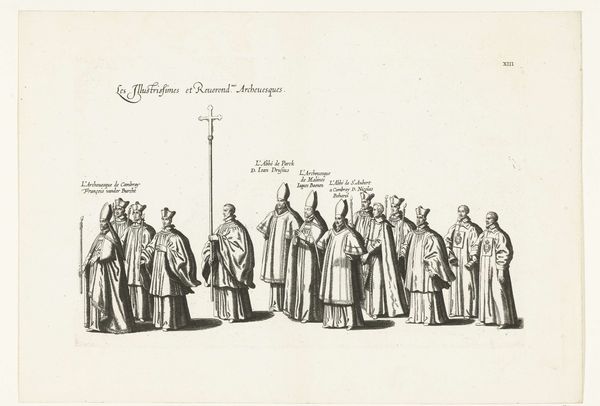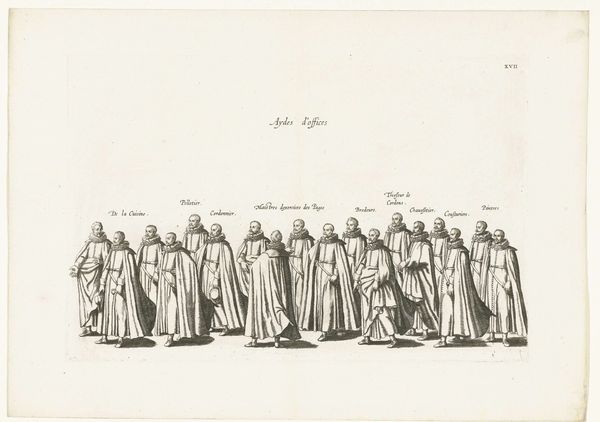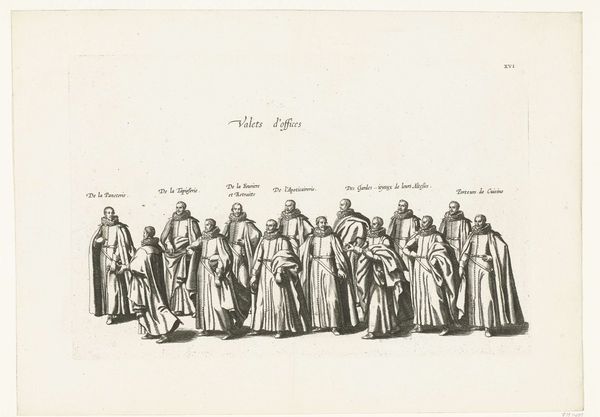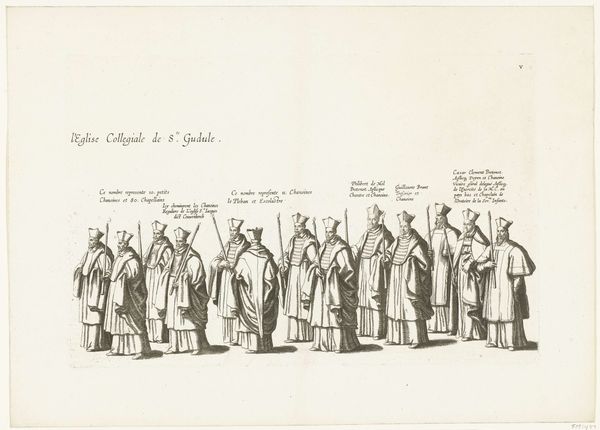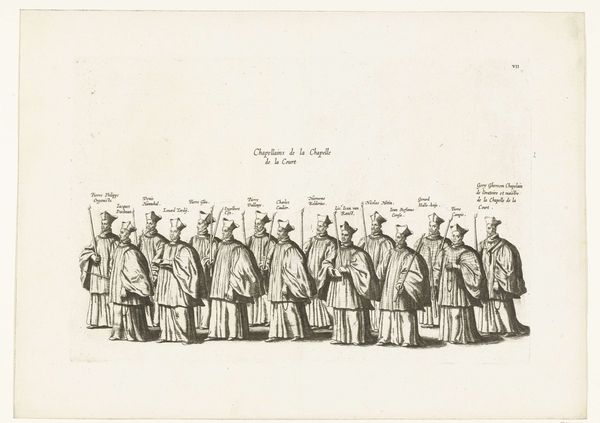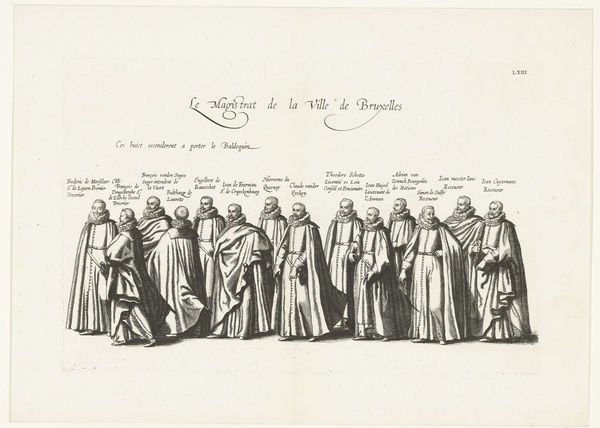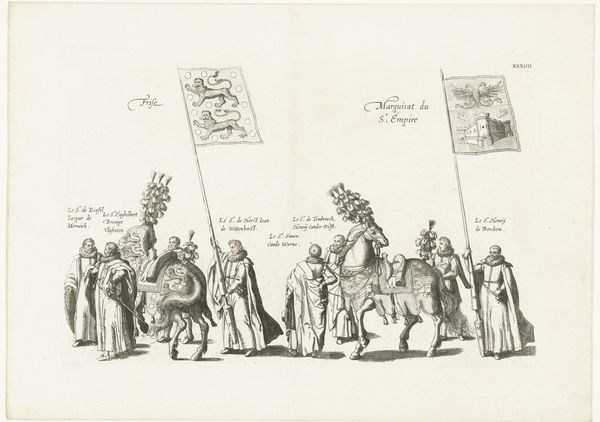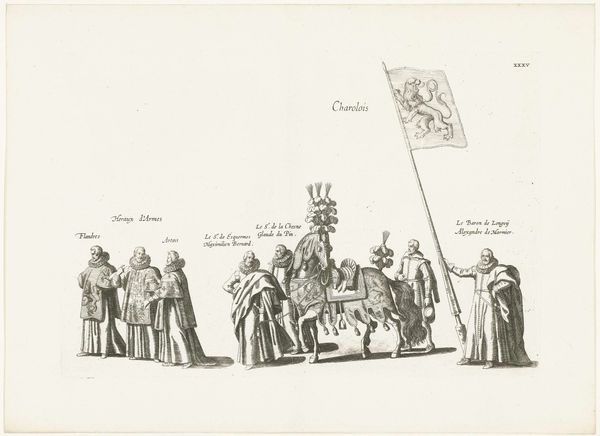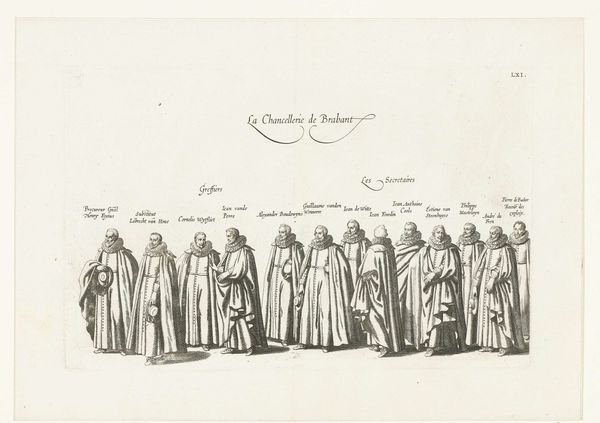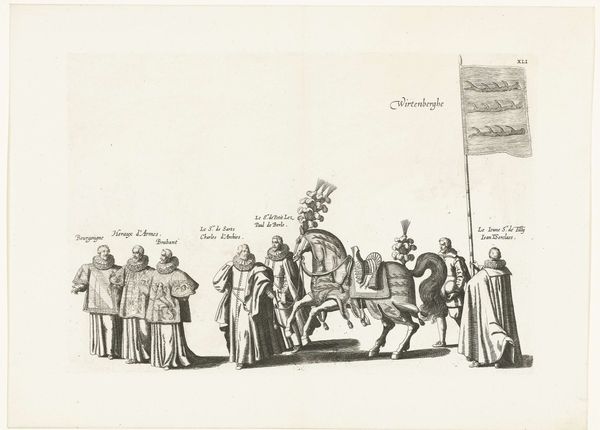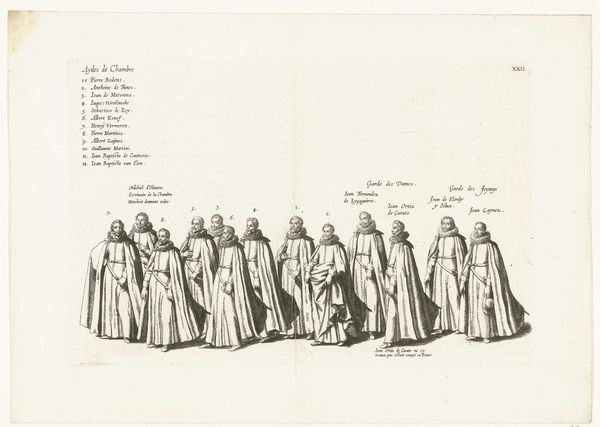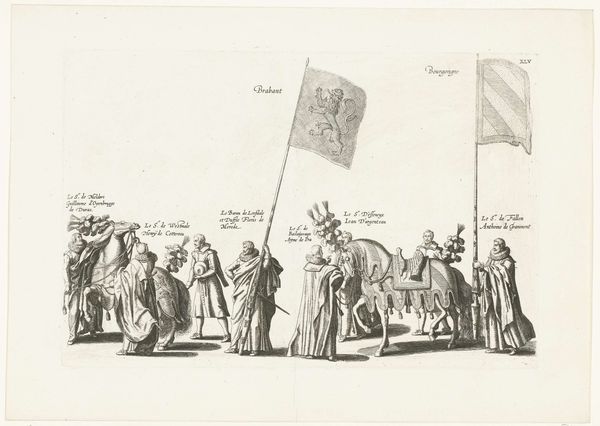
drawing, print, ink, engraving
#
drawing
#
narrative-art
#
baroque
# print
#
figuration
#
ink
#
line
#
history-painting
#
academic-art
#
engraving
Dimensions: height 250 mm, width 378 mm
Copyright: Rijks Museum: Open Domain
This print, "Funeral Procession of Archduke Albrecht," was made in 1622 by Cornelis Galle the First. It's an engraving, meaning the image was incised into a metal plate, likely copper, and then printed. Engraving is a highly skilled and laborious process. The density of lines determines the tones and textures in the image, from the heavy folds of the clergymen's robes to the subtle gradations of light and shadow. The act of engraving transforms what was likely a fleeting, ephemeral event into a reproducible image. Prints like these served multiple purposes. They were a form of documentation, recording historical events for posterity. They were also a form of propaganda, meant to project power and authority. Most importantly, they were commodities, bought and sold in the marketplace, extending the reach and influence of the Habsburg dynasty. It's a fascinating example of how art, craft, and commerce intertwined in the early modern world.
Comments
No comments
Be the first to comment and join the conversation on the ultimate creative platform.
